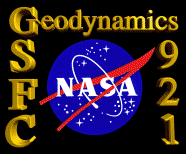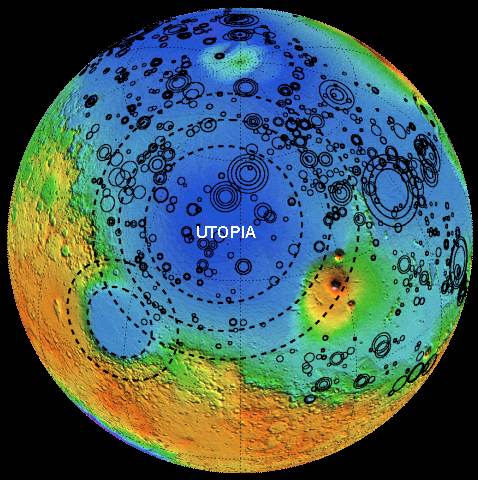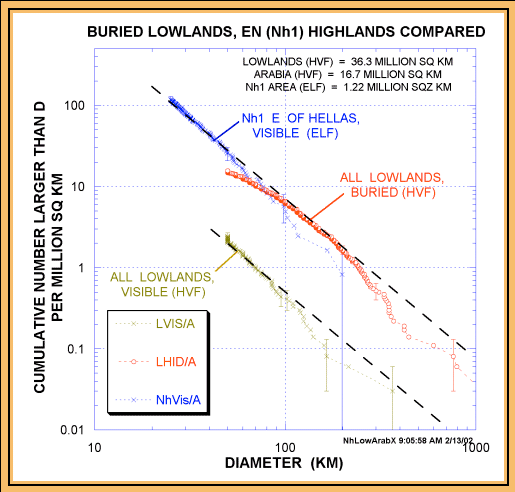

![]()
The crustal dichotomy of old cratered highlands and less cratered smooth lowlands on Mars is the largest and most fundamental crustal feature on that planet. The origin of this has been a major problem in martian crustal evolution since the crustal division was first recognized in the 1970ís. Discovery of hundreds of now buried basins in the lowlands, found in Mars Orbiter Laser Altimeter (MOLA) data, has shown that the lowlands below the smooth plains is actually very old. These results are discussed in a paper by Herb Frey and co-workers now in press in GRL.

The smaller circles are buried impact basins discovered in MOLA elevation data,
most of which are NOT seen in image data. They are superimposed on a much
larger impact basin, called Utopia, more than 4000 km across. Utopia accounts
for the crustal dichotomy (difference in elevation between the highlands and lowlands)
in Eastern Mars. Utopia must be older than the smaller basins on it, which appears to
date from the earliest time on Mars.
At the recent 33rd Lunar and Planetary Science Conference, Frey showed the buried lowlands date from the earliest geologic epoch of martian history, by comparing the crater density of buried basins to crater densities in the oldest terrains on Mars (right). Because these basins are superimposed on the Utopia impact basin, Utopia must be even older. Contrary to some earlier interpretations, the crustal dichotomy in at least this part of Mars may well be the oldest preserved feature on the planet.

The cumulative frequency curves for the buried lowland basins (red) plot
along the same line as for visible craters in the Nh1 unit (blue), thought to
be the oldest geologic unit on the surface of Mars. This suggests the
lowland crust (below the younger plains) dates from the earliest part of
martian history.
Contact: Herb Frey, GSFC, Code 921 (frey@core2.gsfc.nasa.gov)
![]()
![]() Back to Geodynamics Science Highlights
Back to Geodynamics Science Highlights
Responsible NASA official: Dr. Herbert Frey